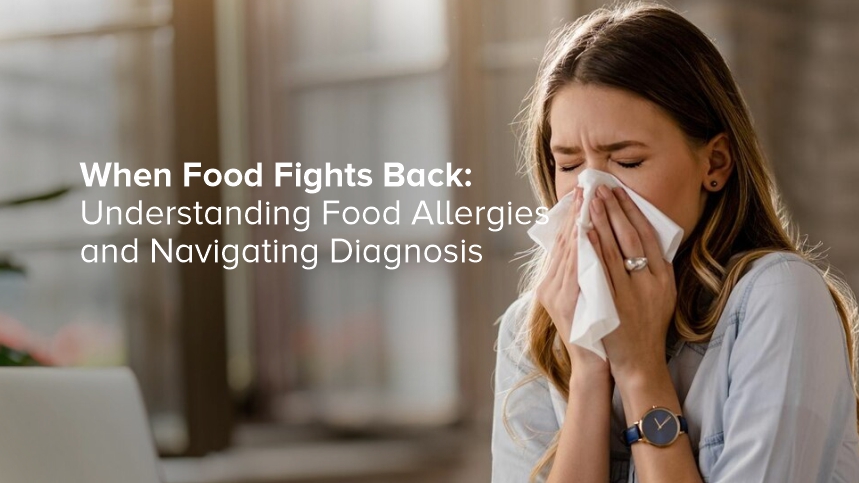


Condition
- Others
- Others
- Others
- Others
- Others
- Others
- Others
- Others
- Others
- Others
- Others
- Others
- Others
- Others
- Others
- Others
- Others
- Others
- Others
- Others
- Others
- Others
- Others
- Others
- Others
- Others
- Others
- Others
- Others
- Others
- Others
- Others
- Others
- Others
- Others
- Others
- Others
- Others
- Others
- Others
- Others
- Others
- Others
- Others
- Others
- Others
- Others
- Others
- Others
- Others
- Others
- Others
- Others
- Others
- Others
- Others
- Others
- Others
- Others
- Others
- Others
- Others
- Others
- Others
- Others
- Others
- Top tests
- Top tests
- Top tests
- Top tests
- Top tests
- Top tests
- Top tests
- Top tests
- Top tests
- Preventive Health Checkup
- Top tests
- Top tests
- Top tests
- Top tests
- Blood Banking & Transfusion
- Lifestyle Packages
- Blood Banking & Transfusion
- Blood Banking & Transfusion
- Top tests
- Top tests
- Lifestyle Packages
- Diabetes
- Blood Banking & Transfusion
- Blood Banking & Transfusion
- Blood Banking & Transfusion
- Blood Banking & Transfusion
- Blood Banking & Transfusion
- Others
- Others
- Others
- Others
- Blood Banking & Transfusion
- Blood Banking & Transfusion
- Blood Banking & Transfusion
- Blood Banking & Transfusion
- Vitamin Deficiency
- Vitamin Deficiency
- Vitamin Deficiency
- Vitamin Deficiency
- Vitamin Deficiency
- Blood Banking & Transfusion
- Blood Banking & Transfusion
- Blood Banking & Transfusion
- Blood Banking & Transfusion
- Diabetes
- Diabetes
- Heart Disease & Hypertension
- Preventive Health Checkup
- Diabetes
- Preventive Health Checkup
- Preventive Health Checkup
- Diabetes
- Diabetes
- Heart Disease & Hypertension
- Top tests
- Heart Disease & Hypertension
- Diabetes
- Top tests
- Diabetes
- Heart Disease & Hypertension
- Lifestyle Packages
- Heart Disease & Hypertension
- Lifestyle Packages
- Heart Disease & Hypertension
- Heart Disease & Hypertension
- Lifestyle Packages
- Preventive Health Checkup
- Preventive Health Checkup
- Top tests
- Preventive Health Checkup
- Heart Disease & Hypertension
- Heart Disease & Hypertension
- Heart Disease & Hypertension
- Top tests
- Top tests
- Lifestyle Packages
- Heart Disease & Hypertension
- Heart Disease & Hypertension
- Top tests
- Heart Disease & Hypertension
- Preventive Health Checkup
- Diabetes
- Lifestyle Packages
- Heart Disease & Hypertension
- Top tests
- Heart Disease & Hypertension
- Heart Disease & Hypertension
- Diabetes
- Lifestyle Packages
- Preventive Health Checkup
- Diabetes
- Top tests
- Diabetes
- Allergy
- Heart Disease & Hypertension
- Diabetes
- Heart Disease & Hypertension
- Diabetes
- Lifestyle Packages
- Lifestyle Packages
- Top tests
- Preventive Health Checkup
- Lifestyle Packages
- Preventive Health Checkup
- Preventive Health Checkup
- Diabetes
- Top tests
- Heart Disease & Hypertension
- Preventive Health Checkup
- Top tests
- Heart Disease & Hypertension
- Lifestyle Packages
- Lifestyle Packages
- Diabetes
- Preventive Health Checkup
- Top tests
- Diabetes
- Top tests
- Preventive Health Checkup
- Preventive Health Checkup
- Preventive Health Checkup
- Diabetes
- Lifestyle Packages
- Lifestyle Packages
- Heart Disease & Hypertension
- Lifestyle Packages
- Heart Disease & Hypertension
- Lifestyle Packages
- Preventive Health Checkup
- Preventive Health Checkup
- Preventive Health Checkup
- Lifestyle Packages
- Top tests
- Lifestyle Packages
- Top tests
- Lifestyle Packages
- Top tests
- Diabetes
- Diabetes
- Others
- Blood Disorders
- Top tests
- Others
- Others
- Others
- Fever
- Fever
- Blood Disorders
- Blood Disorders
- Preventive Health Checkup
- Preventive Health Checkup
- Profile
- Kidney Disease
- Kidney Disease
- Diabetes
- Diabetes
- Heart Disease & Hypertension
- Preventive Health Checkup
- Lifestyle Packages
- Thyroid Disorder
- Diabetes
- Diabetes
- Diabetes
- Diabetes
- Diabetes
- Diabetes
- Diabetes
- Top tests
- Allergy
- Top tests
- Top tests
- Top tests
- Top tests
- Diabetes
- Top tests
- Diabetes
- Top tests
- Top tests
- Top tests
- Liver Disease
- Diabetes
- Top tests
- Vitamin Deficiency
- Top tests
- Top tests
- Liver Disease
- Top tests
- Top tests
- Top tests
- Anemia
- Anemia
- Anemia
- Diabetes
- Diabetes
- Anemia
- Top tests
- Top tests
- Top tests
- Preventive Health Checkup
- Thyroid Disorder
- Heart Disease & Hypertension
- Top tests
- Preventive Health Checkup
- Diabetes
- Heart Disease & Hypertension
- Top tests
- Fever
- Allergy
- Liver Disease
- Lifestyle Packages
- Heart Disease & Hypertension
- Top tests
- Arthritis
- Top tests
- Top tests
- Heart Disease & Hypertension
- Kidney Disease
- Preventive Health Checkup
- Allergy
- Top tests
- Lifestyle Packages
- Top tests
- Kidney Disease
- Top tests
- Lifestyle Packages
- Top tests
- Preventive Health Checkup
- Preventive Health Checkup
- Top tests
- Top tests
- Vitamin Deficiency
- Allergy
- Diabetes
- Top tests
- Top tests
- Top tests
- Top tests
- Heart Disease & Hypertension
- Allergy
- Top tests
- Preventive Health Checkup
- Top tests
- Top tests
- Infertility
- Top tests
- Lifestyle Packages
- Allergy
- Diabetes
- Heart Disease & Hypertension
- Lifestyle Packages
- Preventive Health Checkup
- Preventive Health Checkup
- Top tests
- Preventive Health Checkup
- Top tests
- Diabetes
- Top tests
- Infertility
- Top tests
- Thyroid Disorder
- Top tests
- Allergy
- Preventive Health Checkup
- Vitamin Deficiency
- Top tests
- Top tests
- Infertility
- Lifestyle Packages
- Diabetes
- Liver Disease
- Kidney Disease
- Vitamin Deficiency
- Top tests
- Heart Disease & Hypertension
- Heart Disease & Hypertension
- Top tests
- Heart Disease & Hypertension
- Heart Disease & Hypertension
- Heart Disease & Hypertension
- Infertility
- Heart Disease & Hypertension
- Vitamin Deficiency
- Vitamin Deficiency
- Arthritis
- Arthritis
- Top tests
- Top tests
- Lifestyle Packages
- Preventive Health Checkup
- Lifestyle Packages
- Preventive Health Checkup
- Vitamin Deficiency
- Top tests
- Lifestyle Packages
- Lifestyle Packages
- Preventive Health Checkup
- Top tests
- Preventive Health Checkup
- Top tests
- Heart Disease & Hypertension
- Infertility
- Top tests
- Top tests
- Preventive Health Checkup
- Lifestyle Packages
- Top tests
- PCOD
- Preventive Health Checkup
- Lifestyle Packages
- Preventive Health Checkup
- Top tests
- Fever
- PCOD
- Kidney Disease
- Top tests
- Top tests
- Preventive Health Checkup
- Preventive Health Checkup
- Liver Disease
- Thyroid Disorder
- Top tests
- Heart Disease & Hypertension
- PCOD
- Top tests
- Arthritis
- Preventive Health Checkup
- Kidney Disease
- Lifestyle Packages
- Top tests
- Allergy
- Top tests
- Top tests
- Diabetes
- Thyroid Disorder
- Preventive Health Checkup
- Top tests
- Lifestyle Packages
- Preventive Health Checkup
- Top tests
- Kidney Disease
- Liver Disease
- Infertility
- Top tests
- Anemia
- Top tests
- Top tests
- Top tests
- Preventive Health Checkup
- Bone Health
- Cancer
- Fatty Liver

Tests
The rise in the prevalence of food allergies across the globe has turned what used to be an occasional dietary inconvenience into a pressing global health concern. For those affected and their families, the journey from undiagnosed symptoms to a clear understanding of what's at the root of their discomfort can be a long, confusing, and often distressing one.
Unraveling the Mysteries of Food Allergies
Food allergies occur when the immune system mistakenly identifies certain proteins in food as harmful. This triggers the production of allergy-specific antibodies, known as IgE antibodies, which leads to the release of chemicals like histamine, causing the classic allergy symptoms of hives, itching, swelling, and more severe cases, anaphylaxis.
Almost any food can provoke an allergic reaction, but eight major food groups are responsible for the most significant allergic-related cases: milk, eggs, peanuts, tree nuts, soy, wheat, fish, and shellfish. These eight items account for about 90% of all food allergies. Interestingly, the rate of food allergies has been increasing, with researchers still trying to unpack the reasons behind this global trend.
The manifestations of food allergies are as diverse as the foods we eat. From mild oral allergy syndrome, which can cause itching in the mouth and throat in response to certain raw fruits and vegetables, to life-threatening anaphylactic shock, allergies can present a wide array of symptoms in varying degrees of severity. The complexity doesn't end there. Allergies can develop at any age, even to foods you have eaten without issue for years, and it's not uncommon for the severity of symptoms to fluctuate over time.
Diagnostic Dilemma: Teasing Out Allergy from Intolerance
Understanding whether you have a food allergy or an intolerance is the first step toward effective management and prevention of future reactions.
A food allergy involves the immune system, while food intolerance does not. Lactose intolerance, for example, is a common food intolerance that results from the body's inability to digest lactose, the sugar found in dairy products. It can cause symptoms such as bloating and diarrhea but is not life-threatening. An allergy to cow's milk, on the other hand, can trigger the immune system and result in severe allergic reactions.
Diagnosing a food allergy is more than just identifying what food is causing a reaction; it's also about determining the best way to manage the condition. The gold standard for allergy diagnosis remains the double-blind, placebo-controlled food challenge (DBPCFC), which involves eating suspected foods in a controlled environment. However, skin prick tests and blood tests that measure the presence of IgE antibodies are more commonly used due to their non-invasiveness.
Living with a Food Allergy: Strategies for Safety and Well-Being
Once diagnosed, life with a food allergy can pose many challenges. However, with knowledge, preparation, and community support, it is possible to live a fulfilling life without fear.
Creating an environment that minimizes the risk of accidental exposure to allergens is paramount. This includes thorough label-reading, clear communication about dietary needs with friends and family, and the implementation of strict avoidance protocols, especially in the kitchen and dining areas.
For individuals with severe allergies, especially those at risk of anaphylaxis, having a comprehensive emergency plan is essential. This plan should include the identification of triggers, a written treatment plan, and easy access to emergency medications like epinephrine auto-injectors. It's also important to keep those around you informed about your condition and how to respond in the event of an allergic reaction.
Food is at the center of many social gatherings, which can present challenges for those with allergies. Navigating parties, restaurants, and even the workplace requires a delicate balance of assertiveness, education, and sometimes, adaptation. It's not always easy to stand out, but advocating for your health is a non-negotiable.
A Brighter Future: Research and Support
With the growing prevalence of food allergies, research and advocacy have taken center stage. From leading-edge studies on oral immunotherapy to community-based support networks, the landscape for those with food allergies is continuously evolving.
The field of allergy research is in constant motion, with emerging therapies such as oral immunotherapy (OIT) and sublingual immunotherapy (SLIT) showing promise in desensitizing the body to allergens. There are also exciting advances in the realms of genetic testing and personalized medicine, offering new possibilities for prevention and treatment interventions tailored to individual needs.
Support is a cornerstone of managing a food allergy. Whether in the form of local support groups, online forums, or national advocacy organizations, finding a community of like-minded individuals can provide a wealth of knowledge, a network of support, and a shared journey of empowerment.
Conclusion:
While the road from symptom to diagnosis can be fraught with uncertainty, the thriving ecosystem of research, advocacy, and community support is paving the way for a future where living with a food allergy is not synonymous with restriction and fear but with knowledge, empowerment, and a fullness of life unencumbered by the enemy within one's plate.
WANT TO BOOK HEALTH CHECKUP ?
Categories
Others
74
Top tests
100
Preventive Health Checkup
46
Blood Banking & Transfusion
16
Lifestyle Packages
35
Diabetes
40
Vitamin Deficiency
12
Heart Disease & Hypertension
37
Allergy
9
Blood Disorders
3
Fever
4
Profile
1
Kidney Disease
8
Thyroid Disorder
5
Liver Disease
6
Anemia
5
Arthritis
4
Infertility
6
PCOD
3
Bone Health
1
Cancer
1
Fatty Liver
1
Recent Blogs
Vitamin B1 Test: Why Thiamine Levels Matter for Your Health
Vitamin B1, also known as thiamine, is an essential nutrient that plays a critical role...
27-10-2025
Vitamin A Deficiency: Signs, Symptoms, and How to Prevent It
Vitamin A is an essential fat-soluble vitamin that plays a vital role in maintaining good...
27-10-2025
Fatty Acids Test: When Your Doctor Might Recommend It
Fatty acids play a crucial role in maintaining optimal health, yet many people remain unaware...
27-10-2025







